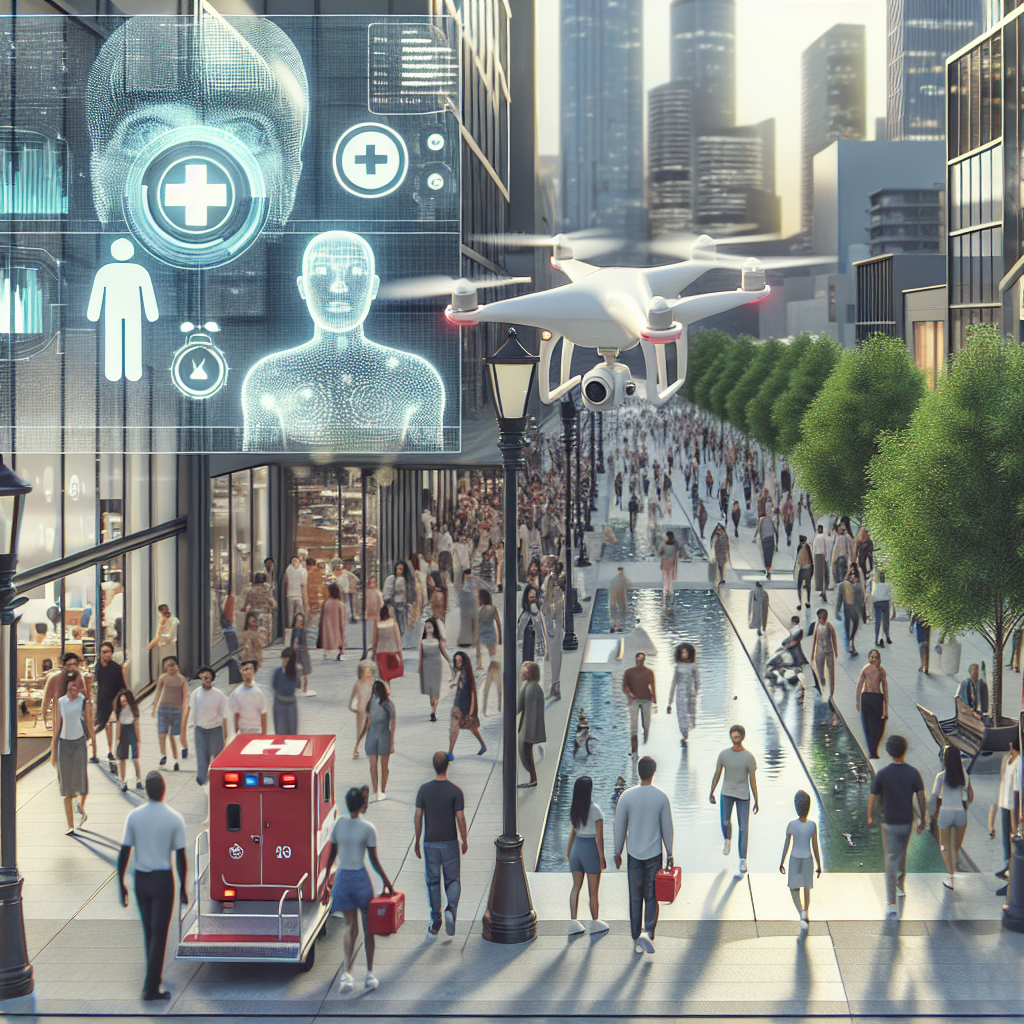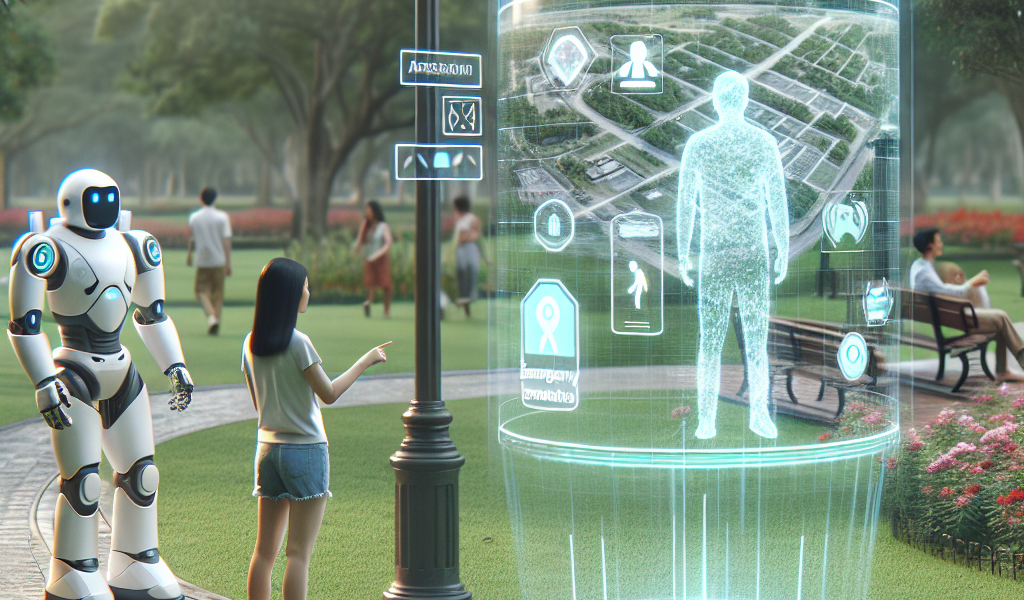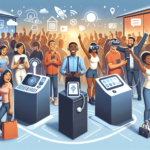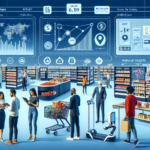-
Table of Contents
“Empowering Communities: AI-Driven Innovations for Safer Public Spaces”
Introduction

The Role of AI in Enhancing Public Safety
Artificial Intelligence (AI) has emerged as a transformative force in various sectors, including public safety. By leveraging advanced algorithms, machine learning, and data analytics, AI enhances the ability of law enforcement agencies, emergency services, and public health organizations to predict, prevent, and respond to safety threats more effectively. AI-driven technologies such as predictive policing, real-time surveillance, and automated emergency response systems are revolutionizing the way public safety is managed. These innovations not only improve the efficiency and accuracy of safety measures but also enable proactive strategies that can mitigate risks before they escalate into critical incidents. As AI continues to evolve, its role in public safety is expected to expand, offering new tools and methodologies to protect communities and ensure a safer environment for all.
Predictive Policing: How AI is Revolutionizing Crime Prevention
In recent years, the integration of artificial intelligence (AI) into various sectors has sparked both excitement and concern. One area where AI’s impact is particularly profound is in the realm of public safety, specifically through predictive policing. This innovative approach leverages advanced algorithms and vast datasets to anticipate criminal activity, thereby enabling law enforcement agencies to allocate resources more effectively and prevent crimes before they occur. While the potential benefits are significant, the implementation of predictive policing also raises important ethical and practical questions.
At the heart of predictive policing is the use of AI to analyze patterns in crime data. By examining historical crime records, social media activity, and other relevant information, AI systems can identify trends and predict where and when crimes are likely to happen. This allows police departments to deploy officers to potential hotspots, thereby deterring criminal activity through increased presence and vigilance. For instance, in cities like Los Angeles and Chicago, predictive policing programs have been credited with reducing crime rates and improving community safety.
However, the deployment of AI in policing is not without its challenges. One major concern is the potential for bias in the algorithms used. If the data fed into these systems reflects existing prejudices or systemic inequalities, the AI may perpetuate or even exacerbate these issues. For example, if a predictive policing system is trained on data that disproportionately targets minority communities, it may unfairly direct law enforcement resources to these areas, leading to over-policing and strained community relations. Addressing this issue requires a commitment to transparency and fairness in the development and implementation of AI technologies.
Moreover, the use of predictive policing raises questions about privacy and civil liberties. The collection and analysis of vast amounts of data, including personal information, can be seen as intrusive and may lead to concerns about surveillance and the potential for abuse. Ensuring that predictive policing practices respect individuals’ rights and adhere to legal standards is crucial for maintaining public trust and support.
Despite these challenges, the potential benefits of predictive policing are hard to ignore. By enabling more efficient use of resources, AI can help law enforcement agencies respond more quickly to emerging threats and reduce the overall incidence of crime. This, in turn, can lead to safer communities and a greater sense of security among residents. Additionally, predictive policing can free up officers to focus on community engagement and other proactive measures, fostering stronger relationships between law enforcement and the public.
To maximize the positive impact of predictive policing while mitigating its risks, it is essential to adopt a balanced and thoughtful approach. This includes ongoing evaluation and refinement of AI systems to ensure they are accurate, unbiased, and respectful of privacy. Collaboration between law enforcement, technologists, policymakers, and community members is also key to developing ethical guidelines and best practices for the use of AI in policing.
In conclusion, predictive policing represents a promising yet complex application of AI in the quest to enhance public safety. While the technology offers significant potential for crime prevention and resource optimization, it also necessitates careful consideration of ethical and practical concerns. By addressing these challenges head-on and fostering a collaborative approach, society can harness the power of AI to create safer, more equitable communities.
AI-Driven Emergency Response Systems: Enhancing Efficiency and Accuracy
In recent years, the integration of artificial intelligence (AI) into emergency response systems has revolutionized the way public safety is managed, offering unprecedented levels of efficiency and accuracy. As communities around the world face increasingly complex challenges, from natural disasters to public health crises, the role of AI in enhancing public safety has never been more critical. By leveraging advanced algorithms and real-time data analysis, AI-driven emergency response systems are transforming the landscape of public safety, ensuring that help arrives faster and more effectively than ever before.
One of the most significant advantages of AI in emergency response is its ability to process vast amounts of data quickly and accurately. Traditional emergency response systems often rely on human operators to sift through information and make critical decisions under pressure. However, AI can analyze data from multiple sources, such as social media, weather reports, and surveillance cameras, in real-time. This capability allows for a more comprehensive understanding of the situation, enabling responders to prioritize resources and actions more effectively. For instance, during a natural disaster, AI can predict the areas most likely to be affected, allowing emergency services to pre-position resources and personnel in advance, thereby reducing response times and potentially saving lives.
Moreover, AI-driven systems can enhance the accuracy of emergency responses by minimizing human error. In high-stress situations, even the most experienced responders can make mistakes. AI, on the other hand, operates with a level of precision that is difficult for humans to match. For example, AI algorithms can detect patterns and anomalies in data that might be overlooked by human operators. This capability is particularly valuable in situations such as search and rescue operations, where time is of the essence, and every second counts. By providing accurate and timely information, AI can help responders make better-informed decisions, ultimately improving the outcomes of emergency situations.
In addition to improving the efficiency and accuracy of emergency responses, AI also plays a crucial role in enhancing communication and coordination among various agencies involved in public safety. During a crisis, effective communication is essential to ensure that all parties are working together seamlessly. AI-powered platforms can facilitate real-time information sharing and collaboration, breaking down silos and enabling a more coordinated response. For example, AI can integrate data from different emergency services, such as police, fire, and medical teams, providing a unified view of the situation. This holistic approach ensures that all responders have access to the same information, reducing the risk of miscommunication and ensuring a more cohesive response effort.
Furthermore, AI-driven emergency response systems are not limited to reactive measures; they also play a vital role in proactive public safety efforts. Predictive analytics, powered by AI, can identify potential risks and vulnerabilities before they escalate into full-blown emergencies. By analyzing historical data and identifying trends, AI can help authorities develop strategies to mitigate risks and prevent disasters. For instance, AI can predict the likelihood of wildfires based on weather patterns and vegetation conditions, allowing for preemptive measures such as controlled burns or public warnings. This proactive approach not only enhances public safety but also reduces the overall burden on emergency response systems.
As we continue to navigate an increasingly uncertain world, the importance of AI in enhancing public safety cannot be overstated. By improving the efficiency and accuracy of emergency responses, facilitating better communication and coordination, and enabling proactive risk management, AI-driven systems are making our communities safer and more resilient. While challenges remain, such as ensuring data privacy and addressing ethical concerns, the potential benefits of AI in public safety are undeniable. As technology continues to evolve, so too will our ability to protect and serve our communities, ensuring that help is always just a moment away.
The Impact of AI on Public Surveillance and Security Measures
Artificial Intelligence (AI) has become an integral part of modern society, influencing various sectors, including public safety. The integration of AI into public surveillance and security measures has sparked both optimism and concern. On one hand, AI offers unprecedented capabilities to enhance safety and security; on the other, it raises questions about privacy and ethical implications. As we navigate this complex landscape, it is essential to understand the multifaceted impact of AI on public surveillance and security measures.
To begin with, AI has significantly improved the efficiency and effectiveness of public surveillance systems. Traditional surveillance methods often relied on human operators to monitor video feeds, a task that is not only labor-intensive but also prone to human error. AI, however, can analyze vast amounts of data in real-time, identifying potential threats with remarkable accuracy. For instance, AI-powered cameras can detect unusual behavior, such as loitering or unattended bags, and alert authorities immediately. This rapid response capability can be crucial in preventing incidents before they escalate.
Moreover, AI’s ability to process and analyze data extends beyond visual surveillance. Advanced algorithms can sift through social media posts, online forums, and other digital platforms to identify potential threats. By recognizing patterns and keywords associated with criminal activities or terrorist plots, AI can provide law enforcement agencies with valuable intelligence. This proactive approach allows authorities to intervene before a threat materializes, thereby enhancing public safety.
However, the deployment of AI in public surveillance is not without its challenges. One of the most pressing concerns is the potential invasion of privacy. The idea of being constantly monitored by AI-powered cameras can be unsettling for many individuals. There is a fine line between ensuring public safety and infringing on personal freedoms. To address this issue, it is crucial to establish clear regulations and guidelines that govern the use of AI in surveillance. Transparency in how data is collected, stored, and used can help build public trust and ensure that AI is employed responsibly.
Another significant concern is the potential for bias in AI algorithms. AI systems are only as good as the data they are trained on. If the training data contains biases, the AI will likely replicate those biases in its decision-making processes. This can lead to unfair targeting of certain groups or individuals, exacerbating existing social inequalities. To mitigate this risk, it is essential to use diverse and representative datasets when training AI models. Additionally, continuous monitoring and auditing of AI systems can help identify and rectify any biases that may arise.
Despite these challenges, the potential benefits of AI in enhancing public safety are undeniable. AI can assist in disaster response efforts by predicting natural disasters and coordinating emergency services. It can also improve traffic management, reducing the likelihood of accidents and ensuring smoother flow of vehicles. Furthermore, AI can enhance cybersecurity measures, protecting critical infrastructure from cyber-attacks.
In conclusion, the role of AI in public surveillance and security measures is a double-edged sword. While it offers significant advantages in terms of efficiency, accuracy, and proactive threat detection, it also raises important ethical and privacy concerns. Striking the right balance between leveraging AI’s capabilities and safeguarding individual rights is crucial. As we continue to explore the potential of AI in public safety, it is imperative to engage in open dialogue, establish robust regulations, and ensure that AI is used in a manner that benefits society as a whole.
Conclusion
The role of AI in enhancing public safety is multifaceted and transformative. AI technologies, such as predictive analytics, machine learning, and computer vision, are being increasingly utilized to prevent crime, manage emergencies, and improve response times. Predictive policing algorithms help law enforcement agencies allocate resources more effectively by identifying potential hotspots for criminal activity. AI-driven surveillance systems enhance monitoring capabilities, enabling quicker identification and response to suspicious activities. In emergency management, AI aids in disaster prediction, resource allocation, and real-time information dissemination, thereby improving coordination and reducing response times. Additionally, AI-powered communication tools facilitate better interaction between public safety officials and the community, fostering trust and cooperation. However, the deployment of AI in public safety also raises ethical and privacy concerns that must be addressed to ensure equitable and responsible use. Overall, AI holds significant promise in making communities safer and more resilient, provided its implementation is carefully managed and regulated.





